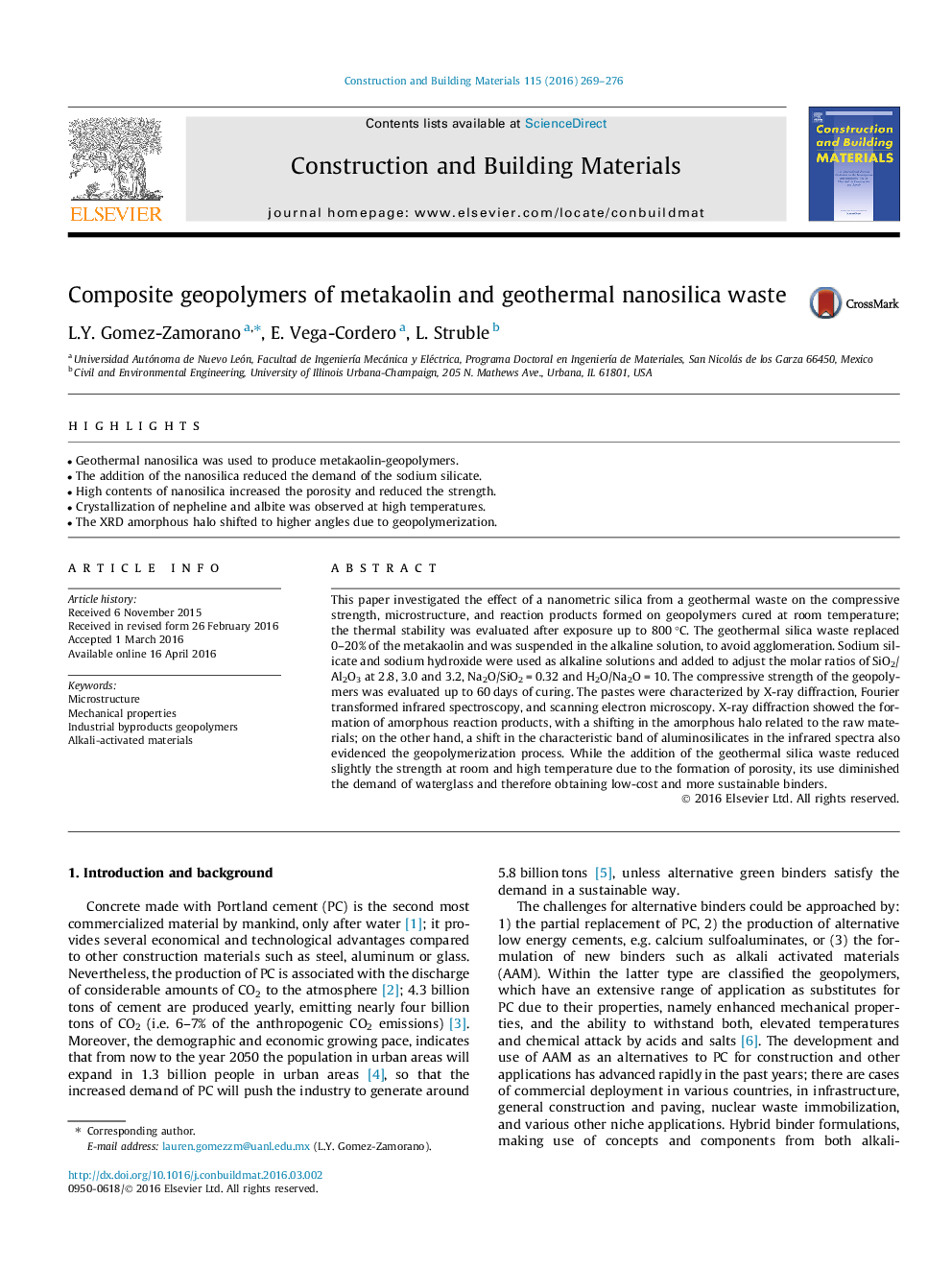| Article ID | Journal | Published Year | Pages | File Type |
|---|---|---|---|---|
| 6718892 | Construction and Building Materials | 2016 | 8 Pages |
Abstract
This paper investigated the effect of a nanometric silica from a geothermal waste on the compressive strength, microstructure, and reaction products formed on geopolymers cured at room temperature; the thermal stability was evaluated after exposure up to 800 °C. The geothermal silica waste replaced 0-20% of the metakaolin and was suspended in the alkaline solution, to avoid agglomeration. Sodium silicate and sodium hydroxide were used as alkaline solutions and added to adjust the molar ratios of SiO2/Al2O3 at 2.8, 3.0 and 3.2, Na2O/SiO2 = 0.32 and H2O/Na2O = 10. The compressive strength of the geopolymers was evaluated up to 60 days of curing. The pastes were characterized by X-ray diffraction, Fourier transformed infrared spectroscopy, and scanning electron microscopy. X-ray diffraction showed the formation of amorphous reaction products, with a shifting in the amorphous halo related to the raw materials; on the other hand, a shift in the characteristic band of aluminosilicates in the infrared spectra also evidenced the geopolymerization process. While the addition of the geothermal silica waste reduced slightly the strength at room and high temperature due to the formation of porosity, its use diminished the demand of waterglass and therefore obtaining low-cost and more sustainable binders.
Related Topics
Physical Sciences and Engineering
Engineering
Civil and Structural Engineering
Authors
L.Y. Gomez-Zamorano, E. Vega-Cordero, L. Struble,
